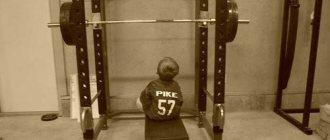Do some stretching
After a hard workout, stretching for all muscle groups is a must. Proper stretching allows the body and nervous system to relax. After intense exercise, the muscles remain in a warm state for about 40 minutes. This is the best time to work on flexibility. Half an hour of stretching is an excellent prevention of injuries, ruptures and sprains. But stretching exercises should not be too intense. When stretching, slight discomfort is acceptable, but there should be no pain.
Medicine. Strategies for restoring the body after a match. Part 1
What are football victories made of? From hard training? Right. From high fighting spirit? It is truth too.
There are many components that can be listed, and today we will talk about one of them.
You probably noticed if you followed EURO 2016 that many coaches paid close attention to the physical readiness of the players. A photograph of Gareth Bale in a cryo-bath before the Russian national team match once again confirmed the importance of modern technologies in the physical recovery of the body after a match.
We turned to two authoritative sources, the medical journal Aspetar and the website of the Australian Football Federation, and selected for you excellent material about the physiological processes occurring in the body during the match and after it. And also about strategies used to quickly restore the body.
The material turned out to be quite voluminous, so I had to divide it into three parts.
So first a little medical dictionary
Aerobic exercise is any type of physical exercise of relatively low intensity, where oxygen is used as the main source of energy to support muscle motor activity.
Anaerobic exercise - in this type of motor activity, energy is produced due to the rapid chemical breakdown of “fuel” substances in the muscles without the participation of oxygen. This method works instantly, but quickly depletes the reserves of ready “fuel” (0.5-1.5 min), after which the mechanism of aerobic energy production starts.
glycogen is a source of glucose reserves for the muscle cell itself (in case of heavy load)
Creatine kinase is an enzyme involved in energy production and breakdown. An energy intermediary in the tissues that require this energy most, namely, in the muscles.
Krepatura (delayed onset muscle pain syndrome) is muscle pain that occurs several hours or days after unusual and intense physical activity.
Lactate is lactic acid released by muscles after exercise.
PART 1
Game requirements
In elite football, the number of matches per season, including domestic, continental and international competitions, can reach large numbers. Some players play up to 70 matches per season. Because of this, there are often two matches per week instead of one.
One match per week causes acute fatigue, is characterized by a decrease in maximum muscle strength and requires several days to fully recover.
When the schedule is congested (i.e. two matches a week for several weeks), the repetition of matches can lead to chronic fatigue for players with such a schedule. FIFA recommends at least two recovery days between matches, but this is not a rule, only a recommendation. Anecdotal interviews with managers and head coaches often indicate player fatigue from frequent games. Are these subjective claims supported by scientific evidence? In this case, an overloaded schedule can cause a decrease in physical performance and an increased risk of injury. This aspect will be discussed in the first part of the article.
The second question is how long does a professional player need to fully recover.
The third part will focus on actions performed during a match that lead to fatigue.
The fourth question concerns recovery strategies that can reduce fatigue and speed up the recovery period.
The impact of an overloaded schedule on physical performance and injury
Football involves many activities such as running, changing direction, jumping, hitting, passing, wrestling and physical contact, which can lead to fatigue. Fatigue is characterized by a decrease in physical and mental activity caused by training. During a match, fatigue sets in after brief intense periods towards the end of the match and after the match. Many non-contact injuries occur towards the end of each inning. Fatigue has been suggested to be a risk factor for injury. Fatigue can also be caused by playing frequent matches over a short period. During periods of high stress (two matches per week for several weeks), recovery time is between 2 and 4 days, which may not be sufficient to restore normal homeostasis.
Before the 2002 World Cup, doctors examined the relationship between footballers who played for European clubs and their performance and injuries at the World Cup. They found that 60% of players who played more than one match in the week leading up to the championship were more prone to injury. Also, over two seasons, studies were carried out on 32 professional football players playing in top teams participating in the Champions League for performance and injury rates. Physical activity during official matches (characterized by distance covered, sprinting, number of accelerations) does not significantly depend on the number of matches per week (1 or 2), while the injury rating increases 6 times (p<0.001). With one match per week – 4.1 injuries per 1000 hours; two matches a week – 25.6 injuries per 1000 hours. This was confirmed by a study conducted over 11 seasons involving 27 professional teams. Overall injury and muscle damage rates increase in league matches that have 4 days or less recovery time compared to teams that have 6 days recovery. The data presented highlight the need for improved recovery strategies to reduce the risk of injury. However, before focusing on recovery strategies, it is necessary to determine recovery time, fatigue mechanisms, and the actions in the match that lead to fatigue. Knowledge of these mechanisms should lead to the establishment of a rational recovery strategy.
Recovery time
After a football match, physical performance deteriorates and several days are required for full recovery. Thus, a sprint of more than 20 meters immediately after a match is characterized by a decrease in results from 3 to 9%. Full recovery of performance in a sprint occurs within a period of 5 to 96 hours. Jumping tests immediately after the match showed a 12% decline. Recovery time is from 48 to 72 hours after the match. The reduction in knee flexion function ranges from -7% to -15%, recovery time is from 51 to 72 hours. Although the use of biochemical markers in muscle injury studies is controversial, cratin kinases are often used to study underlying physiological processes of recovery. Immediately after a match, creatine kinase levels rise from 75 to 250%. The peak occurs between 24 and 48 hours after the match, returning to initial values 69 to 120 hours later.
Differences between study results may depend on many factors. Several studies have already shown high variability in measures such as distance running intensity during a football match. Such indicators depend not only on the level of physical fitness and on the status of the match (whether the team is losing or winning), the strength of the opponent and the location of the match (home or away). Some external factors can also affect players' speed, such as climate conditions or the type of field. As a consequence, the fatigue induced during different football matches can vary greatly and affect recovery time. This variability inherent in football matches makes it difficult to transfer findings from one study to another.
Performance begins to recover immediately after the match. However, some studies have failed to track the normalization of physical performance for 3 consecutive days after the match. This suggests the conclusion that a break of three days between two matches is not sufficient for recovery. A long-term decrease in performance indicates the presence of some fatigue processes.
Mechanisms of fatigue
Let's focus on the mechanisms of post-match fatigue, which is characterized by decreased performance. The challenge for physiologists is to identify the factors and mechanisms involved in post-match fatigue. Prolonged fatigue can be caused by disruption of excitation receptors - muscle contractions and structural damage. According to Rampinini, fatigue is determined by a combination of central and peripheral factors, both immediately after the match and for several hours after the start of recovery. Central fatigue appears to be the main cause of decreased maximal muscle contractions and sprinting performance, while peripheral fatigue is more associated with increased muscle soreness (muscle damage and inflammation).
Fatigue that occurs in the last quarter of a match is characterized by a decrease in running intensity and may be caused by depletion of glycogen stores. Although this fatigue occurs towards the end of a match, post-match fatigue can also be affected, and glycogen recovery after high-intensity football can take 2 to 3 days, depending on the specific nutrition plan. Dehydration and thirst can be additional factors influencing fatigue in the last quarter of a match.
After a match in hot weather conditions (~31.6 C), fluid loss occurs, amounting to about 2% of the initial body weight. There was a significant association (r=0.73, P<0.05) between fluid loss during the match and the fatigue index in the post-match sprint test. However, it is likely that dehydration plays a limited role in the post-match recovery process and rehydration time is relatively short, around 6 hours.
Muscle damage is an important factor in post-match fatigue. Constantly changing direction, accelerating and braking throughout a football match can cause damage. Such injuries are characterized by muscle pain, increased passive rigidity, and morphological changes (destruction and disorganization of sarcomeres, sarcolemma, long-term decrease in maximum muscle strength).
Mental fatigue is an additional factor when considering overall fatigue after a match. When the schedule is overloaded, lack of time between matches is also a reason for slow recovery (lack of motivation, psychological burnout). Overscheduling is associated with flying, which can lead to disruption of circadian rhythms and increased stress caused by prolonged stagnation (during a trip), sleep quality.
Recovery Strategies
According to the researchers, there is now a general practical solution to this problem. To bridge the gap between science and practice, a survey was conducted among football teams on recovery strategies. 32 clubs took part in the survey. According to the survey results, clubs use in their strategies: nutrition and hydration (97% of clubs), proper sleep patterns (95%), cold and contrast baths/water procedures (88%), active recovery (81%), massage (78% ), stretching (50%), compresses (22%) and electrical stimulation (13%).
More on recovery strategies in the next part!
Source: manutd.one
Follow us on social networks: Vkontakte \ Twitter \ Facebook \ Instagram
Take a break from eating
Following a diet is an essential key to a successful workout. Without proper nutrition, you will not be able to achieve your goals. If your goal is to lose weight, then after exercising it is recommended not to eat for at least 30 minutes. During sports, the body switches on an enhanced calorie burning mode. If you eat immediately after training, this regime will be stopped.
The best option for losing weight is to pause for 2 hours before eating. After a couple of hours, you can eat eggs or a protein product, and if a strong feeling of hunger does not allow you to calmly do other things, then use a banana or a protein shake as an additional snack. But avoid fatty foods, especially fast food, otherwise all the efforts spent in the gym will be in vain.
During the first training
“My heart is beating fast and it’s become difficult to breathe!”
This is a healthy reaction of the body to physical activity. There is no need to be afraid of it, because it is a completely natural process. You begin to breathe deeper and more often, saturating your cells with oxygen. As a result, the complexion begins to change for the better.
You also don’t have to worry about your heart rate, because it can be affected not only by loads, but also by heat, air humidity, lack of oxygen in the air, overeating before training, menstrual periods, stress and even loud music!
Changes also occur in the muscles. They begin to become more actively saturated with blood and even swell (after training, this effect goes away)! In addition, long-forgotten and little-used muscles, which remind of themselves with a slight aching pain, also become toned.
And you become not only stronger, but also more resilient, stronger, more energetic and more cheerful. During physical activity, a “hormonal storm” begins in the body, which triggers and accelerates slow metabolic processes. The body is literally renewed.
There is also a release of adrenaline and other hormones, the nervous system is excited, which leads to a sharp improvement in well-being and increased energy! Paradox!
Conclusion: even during the first lesson, qualitative changes begin to occur in the body of every person!
Take a shower
Increased sweating leads to the growth of bacteria, which causes an unpleasant odor and can lead to skin diseases. To prevent this, be sure to take a shower. In addition, a cool shower speeds up the recovery process and gives you a boost of energy after exercise. If it is not possible to immediately resort to water procedures, then wipe the body with a damp towel and change clothes to prevent harmful microorganisms from multiplying on the skin.
Each workout is another step towards an ideal body. But it is important not only to organize the training correctly, but also to provide the necessary conditions for the body to fully recover after exercise. Follow these simple recommendations and you can achieve maximum results from your sports activities.
What happens if you exercise daily? How will your body change from regular exercise?
Everyone knows that regular exercise helps keep the body in good shape and also has a positive effect on the emotional state, as it allows you to get rid of accumulated stress. However, how will the body react if you train every day without recovery days off? Fitness blogger from the USA Brandon Romain decided to test this from his own experience.
Losing weight will be easier if you follow simple habits every day.
Lifehacks from a nutritionist that will make your life better.
What was the essence of the experiment?
Brandon decided to do daily workouts and carefully monitored the changes that were happening to his body. The guy trained mainly using the high-interval intensive training (HIIT) system, the essence of which is alternating walking and sprinting for half an hour. In addition, the blogger visited the gym a couple of times a week and did exercises for his abs, back and legs.
Brandon also followed a special diet that required a daily intake of 3000 kcal: 200+ grams of protein, 200+ grams of carbohydrates and 50-70+ grams of fat.
At the end of the first week of the experiment, Brandon did not notice any major physical changes. But I felt that I had become stronger mentally: “I notice how HIIT training and any other challenges affect me, I see progress.”
On the nineteenth day, alternating between walking and sprinting became much easier. The blogger noted that he became much more resilient and significantly increased his running speed.
On the last day of the experiment, Brandon showed himself before and after. Despite the fact that he tried to gain weight all month, he, on the contrary, managed to dry out. “I think working out every day helped me not gain weight. At first the weight stayed the same for a long time, then I even managed to lose a little weight. Also, I finally have abs.”
In pursuit of six packs: why you shouldn’t train your abs every day
This is the case when excessive zeal is not helpful.
How to start exercising every day?
Brandon's example can't help but inspire other people. After this, I want to test the effectiveness of daily training on myself. But what do you need to know before you start the experiment?
Christian Haria, famous calisthenics blogger (Calisthenics is a system of exercises with your own body weight, aimed at developing functionality, strength, speed, coordination. - Ed.)
, also plays sports every day. In his opinion, anyone can master daily training. The main thing is to maintain balance and listen to your own body. You should not push yourself to the point of exhaustion, and it is best to alternate between strength training and cardio.
“It is very important to create a training program from the beginning. You can train every day, from Monday to Monday, you just need to maintain a balance: start the week with intense training and end with lighter ones. And don’t push yourself to the point of exhaustion: if your body is tired all the time, you shouldn’t expect progress,” Christian advises subscribers.
A blogger's strength workout looks something like this:
- warming up;
- muscle-up on the rings + push-ups from the horizontal bar + pull-ups (drop set: 5-10-10, 7-7-7);
- deadlift;
- planch push-ups;
- simple push-ups (5-6-7).
What will happen to your back if you hang on the horizontal bar every day?
Together with the coach, we figure out whether this exercise is really as useful as they say.
If you have long dreamed of challenging yourself and trying to train every day, don’t put it off. However, remember that to achieve real results, it is not enough just to exercise; you also need to monitor your diet and generally maintain a healthy lifestyle.
What is recovery
First, let’s define what we mean by “recovery after training.” It is your body's ability to meet or exceed a given performance level and the body's adaptability to the stress of training. The training process is a real stress for the athlete's body. After intense exercise, the body begins to react to the load by launching certain mechanisms:
1. Restoration of torn muscle fibers.
2. Replenishment of fluid levels in the body.
3. Synthesis (production) of protein.
Recovery consists of these three elements. But this process takes a different amount of time for each person. How to calculate it correctly?
Do you know what happens to your body after the first workout?
Exercising will not only help you tone your muscles, but it will also provide many health benefits in the long run.
Keep reading to find out more about this!
Do you know what happens to your body after the first workout?
If this doesn't motivate you, nothing will ever happen!
So, already the first training:
1. Relieves stress
A recent survey found that only 14% of people exercise to reduce stress. Exercising will improve blood circulation and relieve stress.
2. Reduces the risk of diabetes
A 2007 study found that just one workout reduced excess muscle fat, which improved insulin sensitivity. Low insulin levels lead to diabetes.
3. Can change your DNA
Swedish scientists have discovered that one workout can change the genetic material in muscles.
4. Improves concentration
One workout can improve the function of your brain cells, which can improve your concentration.
5. Leaves you in a great mood
During exercise, your brain will begin to release endorphin and serotonin, which will improve your mood and fight depression.
Shall we turn on some music to set the mood?
Now playing:
Open Kluber FM website | iOS app | Android app









